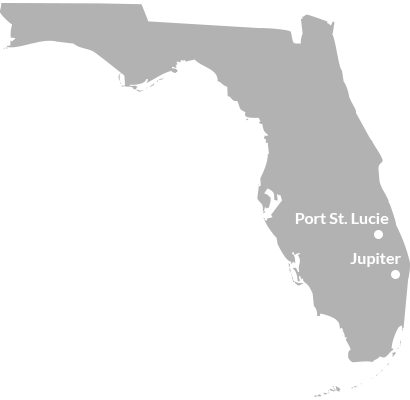Nobody likes a mooch, especially one that doesn't pay rent.
But sometimes, you don't know that you even have a mooch until your ceiling crumbles down over your head.
We're talking about termites, the most unwanted visitor next to your in-laws. Termites cost homeowners roughly 20 billion dollars a year in damages, repairs, and exterminations.—At least spiders do some damage control by eating mosquitos and other bugs.
So where do termites come from and how do you spot them? Keep reading to find out.
What Exactly Are Termites?
Termites are some of the most destructive insects to have in your neighborhood and home. In fact, they are possibly the biggest threat to your home because they can damage your foundation at an alarming rate, costing you a hefty sum in repairs and extermination.
Termites feed off the cellulose found in wood. They also thrive in warm, moist climates. Your home provides all of these things, including shelter.
They are also known to munch on newspapers, books, and almost any exposed wood around the house.
The first step to preventing a termite infestation is understanding where termites come from, and how they get into your home. Knowing the signs of termite activity and which points of entry they are using can help you get rid of them quicker and salvage your home.
What Do Termites Look Like?
You will most likely see termite damage before spotting an actual termite since they tend to hide. They are small insects, very similar to ants.
But unlike ants, termites have a straight waist and straight antennae. Like flying ants, Swarmer termites also have wings. However, their wings are the same length whereas flying ants have uneven wings.
Swarmer termites are responsible for procreating and building a new colony. Once they mate, they shed their wings. So if you see discarded wings around your home, it' a sign that you have termites taking up residency. Mating season takes place during Springtime, so this is when you should really keep your eyes peeled.
Where Do Termites Come From?
There are three common species or groups of termites that wreak havoc on homes. Each group of termites is identified by their work, and where they come from is revealed by their points of entry.
Subterranean Termites
Subterranean termites are the most common type of termite nationwide, and they do the most damage. They live in the soil beneath your home and can enter through the wood that touches the ground. Their nests are typically found underground where there is sufficient moisture.
These termites are the workers, constructing mud tubes which provide them with a moist and safe passageway into your home. These foraging tunnels later become exploratory tubes, as they search for cracks and gaps within your home to find more wood. Termites coming up from the ground will create drop tubes that extend upward.
These termites only consume the softwood and they eat along the grain, leaving damaged layers of hardwood and mud tubes along different surfaces.
Drywood Termites
Drywood termites like to live in dry and sturdy wood. They are able to obtain moisture from the wood that they feed on, so you won't find them in the soil beneath your home.
They will typically infest the foundation of your house, unscreened foundation vents, the attic, wooden furniture, cracks around window and door frames, soffits and roof sheathings. Their entry points are generally dry, exposed wood (hence their name).
Since they don't depend on a great degree of moisture, you won't find the same mud tubes as Subterranean termites. Instead, they chew tunnels throughout beams and other wooden objects. This weakens the foundation or localized parts of your home, depending on where the infestation is.
Drywood termites tend to leave behind wooden pellets known as frass, which looks just like a regular old pile of sawdust. So if you see this and haven't done any recent construction, you've probably got some unwanted tenants.
Dampwood Termites
Dampwood termites love water-damaged wood. These termites are very drawn to tree stumps, lumber, mulch, logs and tree branches left on the ground to absorb water. The more moisture, the better.—For them, not you.
Infestation usually occurs when you bring termite infested lumber into the house. This also goes for infested mulch used around the home. They can also invade areas of the home with extensive water damage, including cracked water pipes and leaky roofs.
The swarmers of this species are very attracted to light and may hang around your porch light in the evening. This also gives them access to your front door, and they can fly right in when you are entering or exiting your house.
Once they enter your home, they will create a home in any damp wood that they find, mate and begin a new colony. It's difficult to detect these specific termites until there is serious damage. This is because they cover their tracks (or tunnels)—with their own feces.
Since they only set up shop in wood with high levels of moisture, a fungus can occur causing even more damage from rotting wood. They will hollow out the support beams of your home, weakening your very foundation.
If you begin to notice decaying wood or leaks that result in excessive indoor moisture, there's a good chance that you have these silent invaders munching on your house.
Don't Wait Until it's Too Late
So where do termites come from? Well, they can be coming from the inside of your own home!
Termites never sleep, and they can multiply into the thousands fast. If you don't catch them early, they will quickly establish entire neighborhoods, schools, churches, and their own government — just kidding! But, you get the picture.
If you suspect any termite activity in your home, call us right away. We offer a free, no-obligation estimate for your home or business.


